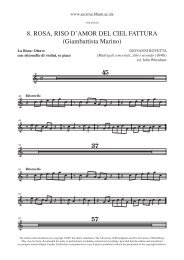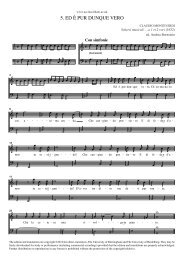Birmingham Environment for Academic Research - University of ...
Birmingham Environment for Academic Research - University of ...
Birmingham Environment for Academic Research - University of ...
- No tags were found...
Create successful ePaper yourself
Turn your PDF publications into a flip-book with our unique Google optimized e-Paper software.
CFD (Computational Fluid Dynamics) Simulations <strong>of</strong> Train Slipstreams on a Rotating RailThe highly turbulent non stationary nature <strong>of</strong> theslipstreams make their measurement difficult andtime consuming. Moreover, several passes <strong>of</strong> thetrain have to be made in order to identify thetrends <strong>of</strong> behaviour and the statistics <strong>of</strong> the slipstream.A new technique has been developed inorder to minimise considerably the measuringtime. It consists <strong>of</strong> a rotating rail rig to which a1/50th scale model <strong>of</strong> a four coach train is attached. Although this technique allows the tests to be carried out more rapidly, it alsointroduces a curvature that affects the velocity results on either side <strong>of</strong> the train. CFD calculations, with different turbulence models,are carried out and results are validated using the experimental data. Further CFD calculations <strong>for</strong> different rig curvatures should enablea judgment to be made on recommendations <strong>for</strong> the design <strong>of</strong> a larger more representative rig that retains the utility <strong>of</strong> being ableto simulate many train passes rapidly whilst being more representative <strong>of</strong> reality.Ansys ICEM-CFD was used to create the computational domain. The transient behaviour <strong>of</strong> the slipstream around the train is investigatedusing LES with the standard Smagorinsky model. To investigate the reliability <strong>of</strong> using RANS to predict the slipstream velocity,a RANS simulation has been per<strong>for</strong>med using the SST- KOmega model at the same Reynolds number as the LES simulation.The LES results are in close agreement with the experimental results. Although RANS didn’t predict the slipstream velocity accurately,results are good enough to capture the differences in slipstream velocities between the inner concave side <strong>of</strong> the train and its outerconvex side. There<strong>for</strong>e, in the simulations to come, RANS will be used to find the maximum curvature the rig can present to be repre-Nahia GillSchool <strong>of</strong> Mechanical EngineeringPage 23








